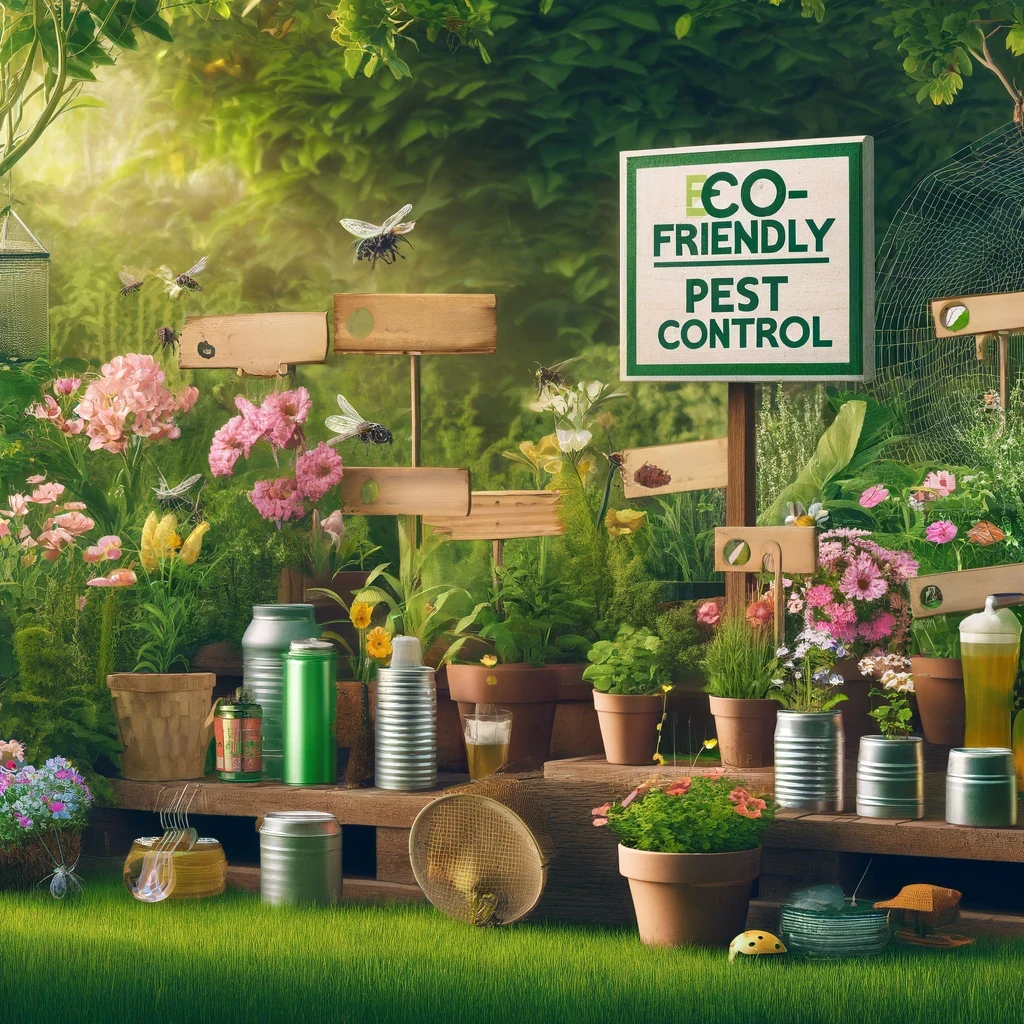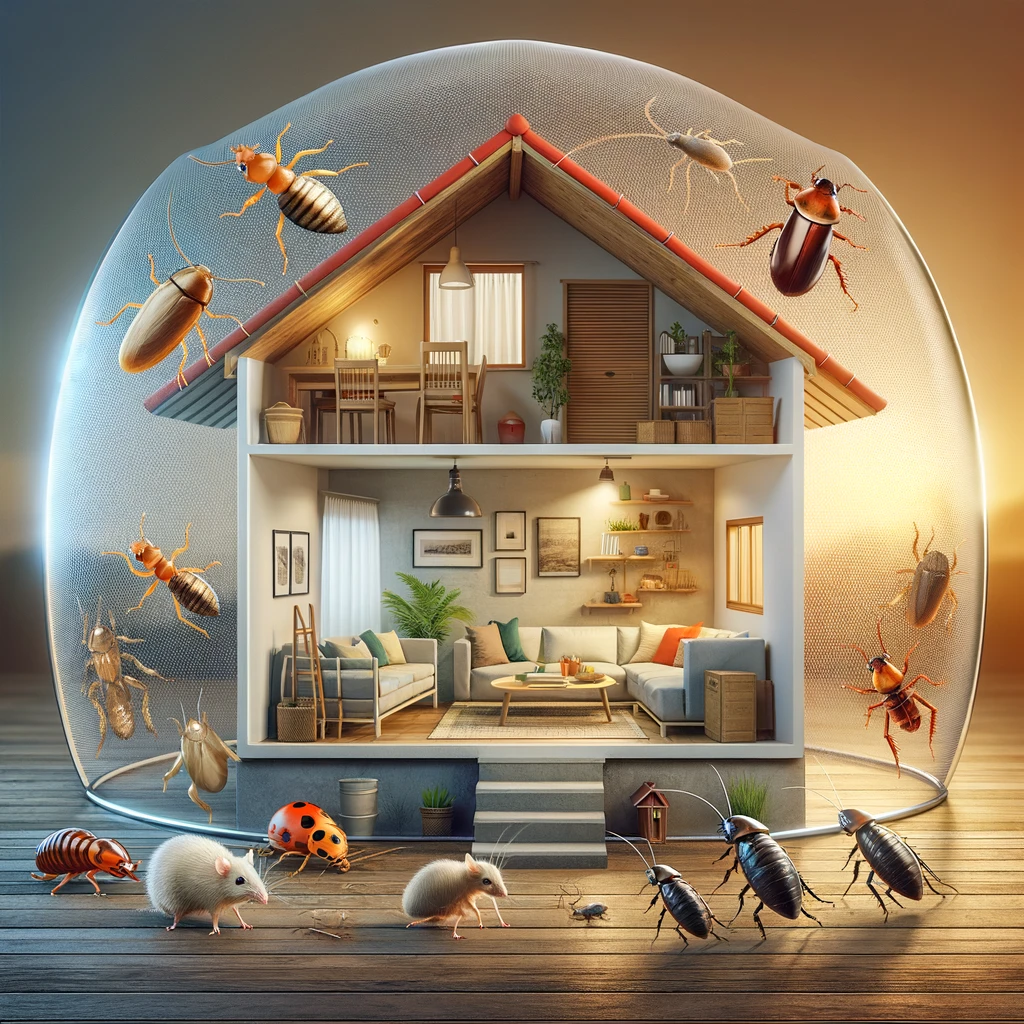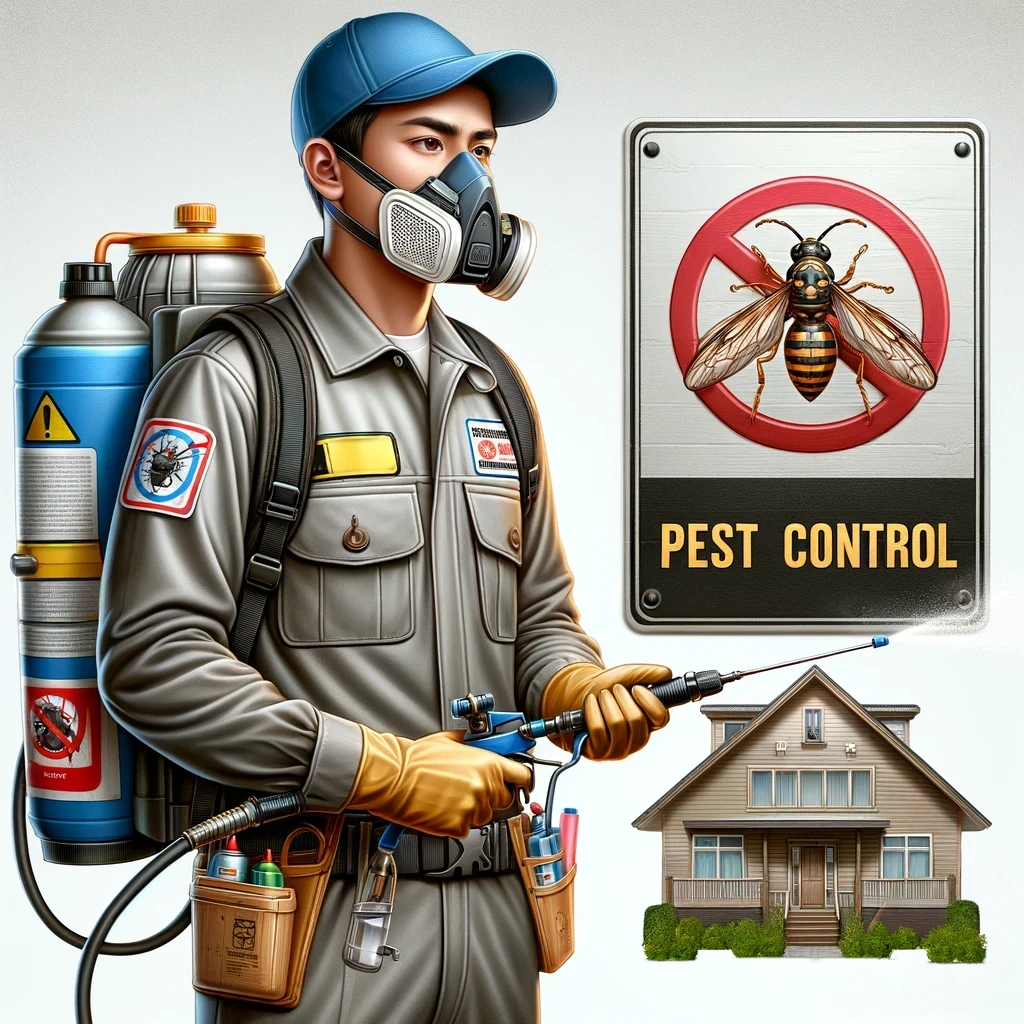Using Traps Instead of Pesticides: Why Traps Are at the Center of More Sustainable Pest Management
Pesticides use has been a subject of controversy for the last few years. Although impactful for pests, that booming success is precisely what worries environmentalists and health officials. Pesticides can be hazardous pollutants that contaminate soil and water sources, harming local wildlife or even long-term human health in high-risk scenarios like for children or pregnant women. In addition to being toxic they can upset fragile ecosystems by wiping out helpful bugs while strengthening the population of pests how that are resistant to those poisons, making future eradication more difficult.
Compared to land, people consume far more resources and need them for waste disposal at some point in the process. All these facts show why safer and sustainable pest management is becoming a high demand solution. The use of preventive methods that are based on common sense to prevent plant health problems, and if there is a problem, the emphasis is on natural biological control. This concept has become popular as Integrated Pest Management (IPM). This philosophy makes the distinction that pest control is not about removing all life, but rather taking hierarchy of a system into account.
Traps are evolving into an essential IPM tool, providing a sustainable non-pesticide avenue for pest suppression. Traps lure and contain pests deliberately, thus allaying concerns about collateral damage to beneficial insects, wildlife and human health. It also keeps the environment free of any chemical residues that may affect the delicate balance of our ecosystem.
For detailed information about pest control in the home, don’t miss our The Ultimate Guide to Pest Control in the Home: Protect Your Sanctuary from Unwanted Invaders
Eco-Friendly String Traps For Pest Control
There is a strong case to be made for using traps instead of pesticides with regard to environmental and human health. The move to more sustainable pest management practice has a variety of benefits:
Environmental Protection Traps are Essential in Natural Pest Control and help to reduce chemical exposure,respect biodiversity. They are able to reduce their use of chemical insecticides because they can target the exact pest they wish to control, without the need for broad-spectrum pesticide applications that can affect non-target beneficial insects, pollinators and other wildlife. Those practices ensure control of the natural balance in ecosystems and contribute to preserving the fragile network that is life on earth.
Pesticides are something like a broad-spectrum insecticide, sort of akin to taking a shotgun into your Garden of Eden. Traps, on the other hand, are sniper rifles that only target one area perfectly and does nothing to the surrounding.
Safety for Human Health: In addition to children and pets being in danger of pesticide poisoning, the non-target animals (beneficial species) will be adversely affected as well.Minimizes Risk The use of traps to control an infestation reduces the overall risk to human health due to exposure. Pesticide residue can remain on surfaces and present a hazard to small children who mouth objects. Curious animals that wander and occasionally lick surfaces are also open to accidental chemical exposure. Traps are a great way to keep dangerous pesticides— harmful, not only to pests but also people and pets that could be exposed in the form of secondary poisonings or exposure —away from any living organism while still providing pest control.
Also, the choice of traps in lieu of pesticides reduces the likelihood that poisonous chemicals may be accidentally applied. This is more important for those who are allergic or sensitive to an ingredient.
Selective Pest Control Pesticides take effect by harming a plethora of living beings. However, traps allow pest control to be fine-tuned and narrowly focused. Most issuers only have a single pest in mind, preventing the disruption of non-target organisms that naturally keep pests under control. This precision can help a more effective pest control — tackling directly the problem without an unwanted massacre.
Long-Term Efficiency Using traps can help interrupt the build-up of pesticide resistance, which allows you to be more effective in your pest control efforts long-term. Exposure to the same pesticides over pesticide applications, pest develops resistance and those chemicals are no more efficient. It leads to the use of stronger and more toxic chemicals — a self-reinforcing boom in chemical escalation. By providing an alternative methodology, traps help to break this cycle and in turn encourage a more sustainable and reliable method of pest control.
Different Traps for Different Pest conditions
Pest Trapping in Many FormsIf you thought mice and rats were the only critters that required trapping, you would be grossly incorrect as there are a virtual cornucopia of traps for many pests. Knowing which traps can be applied to specific situations helps you determine the best trapping method for what you want to accomplish.
Sticky Traps: The Basic Way to Catch Flying and Crawling Insects Sticky traps are one of the simplest means to get rid of insects, flying or crawlers alike. Most of these traps feature some kind of brightly colored sticky surface which the pests will be attracted to because it is often yellow or blue. Once an insect touches down on the trap they get stuck and then cannot fly away.
Sticky traps work best for the following:
- Flies: many sticky traps are yellow, because that is a natural flower color that flies can mistake for a nectar source
- Moths: Sticky traps can help get rid pantry moths and other moth species that are drawn to light.
- Aphids: Tiny, sap-sucking insects can cause damage to plants and are typically controlled with sticky traps.
Placing sticky traps in the right area can really help this. Put them on the window, door side or regular track of pests where they will be most effective.
Beer Trap: A Brew For Slugs and Snails, Beer traps—yes they do what their name implies, using the sweet scent of beer to bewitch slugs and snails into your clutches. Beer traps are nothing more than shallow dishes filled up with beer that has been partially buried in the ground so slugs and snails may freely visit them, be unable to get out of the dish again, attracted by fermentation process going on into it Alternatively, leave only a little beer in a glass and attract them Also the opening is recommended to be smaller than themselves when they try anything.
Pheromone Traps: The Art of Pesticide-Free Target Practice Spider Mite Central introduces pheromone traps as a method to attract specific insects. Pheromones are chemical cues that insects use to communicate, including for finding mates. Synthetic analogues of these pheromones are used to bait the specific target insects in pheromone traps.
The best use of pheromone traps is :
- Moths: Pheromone traps can be used to trap male clothes moths and pantry moths, called Tineola bisselliella and Plodia interpunctella, respectively.
- Beetles: Pheromone traps control various beetles (e.g., bark beetles, weevils) attacking trees and crops.
- Lure flies: Certain species of flies — particularly fruit and house flies — can be lured with the right pheromone traps.
These traps target pests by mimicking their behavior and mating habitat, thus are highly specific to a particular kind of pest.
What Type of Trap Works Best for Your Pest Situation
When choosing what type of trap to use, there are a lot out there; take care so you do not pick up any which is least effective. This means knowing the pest, learning how it lives and selecting an appropriate trap for its behavior.
Identify the pest Accurate identification is a first step to success when trying to trap them. It is like using a fly trap on an ant farm instead of employing, and The slug trap has no plan to affect pigeons at all. Here are some of the crucial points to think about:
- Identify: Pest appearance (size, shape, color, etc.) Photograph or find similar images online to confirm.
- Behavior: How does the pest travel? Is it a bird, spider or mole rat? This helps funnel the
- Person: Where seen pest In the kitchen, garden, attic or basement? This data will advise you upon traps which calls each lure choices. are correct for the environment in question.
- Harm: Which injury is the pest leaving behind? Things like chewing on clothes, eating your plants or leaving droppings? The nature of the damage can also point you in the right direction as to which pest is wreaking havoc.
Know Your Foe: Pesticide Management when You Know What It Is -Understanding Pest Behavior Knowing this will assist you in deciding what type of trap to use and where to put it.
- Feeding: What is the pest eating? Knowing what the pest is feeding on can also be an advantage as traps can be placed near food sources.
- Preferred habitats: Where the pest hides or lives. Placing traps where the pest frequents can help you place them and catching it in no time.
- Activity patterns: when is the pest likely to be most active? Nocturnal/Diurnal/or more active during certain times of day? It will guide you in choosing the right time to keep traps.
Strategic Trap Placement Essential for Success Successful pest control is dependent on accurate strategic trap placement. Consider these guidelines:
- Close to pest food sources : Putting the bait next to what pests are eating helps trap more of them.
- Entrance perimeters: Place traps near entrances like windows, doors and cracks in walls to catch pests as they approach your home.
- Trap locations: Common areas where droppings can be found, such as around plants, garbage cans etc.
Trap Maintenance and Replacement: Keep Control Progressing It is crucial to practice maintaining all traps from time to time for their efficiency at peak level.
- Sanitation: Sticky traps can become clogged with debris, which in turn can discourage pests from attempting to cross the trap. Clean sticky traps when they become full of spider mummies or other detritus.
- Repairs: If a trap or an accessory becomes damaged and/or ineffective, replace it.
- Checking on traps: Monitoring your trapline to see how you are doing. If the traps are not working to capture pests, try a different trap or moving it around.

Trap Safety and Ethical Considerations: A Humane Approach to Pest Control
Traps are an integral component to any eco-friendly pest management plan, but it is equally important that they be used with the utmost in safety and ethics. It also speaks to reducing risk to humans, pets, and other wildlife- for instance is the trap used humane?
Human Safety: Safeguarding Humans and Pets Although safe
traps carry risks just like any other pest control, if used improperly. If you notice a rattlesnake in your yard, have caution to avoid bites or stepping on snakes that are not visible.
- Kids Harm: Sticky mouse traps and other forms of slaughtering rat traps are unsafe to small kids. Always place traps high dolls, puppets, and if possible (in this regard) intimidated little hands that run from the heat and important to stuff in his mouth.
- Pet Safety: Pets, particularly inquisitive cats and dogs, may be attracted to traps which could lead to injury or even entrapment. Opt for pet-resistant circle traps or areas that your pets cannot access.
- Location: Put traps in places where there are less odds of people or animals come into immediate contact with a trap.
Animal Welfare: Managing Distress and Suffering
Although traps are designed to capture control pests, we should also think about the humane treatment of animals. Use the least cruel type of trap, which should also take steps to dispatch or release quickly and humanely as appropriate.
These include:
- Trap Types : For example, cage traps are generally considered less inhumane than restraining devices such as leg-hold traps. Cage traps are less likely to maim and make a striking dispatch quick and painless.
- Check Your Traps: Inspect your traps every day so that animals are not left to suffer and die inside.
- Dispatch : Dispatch with lethal traps must be fast, painless and humane which reduce the period of animal distress.
Beneficial Insects: Trapping Not to Cause Harm
While some pests are specific enough that traps can be a highly effective means of control, it is important not to do more harm than good in attempting to manage the problem by decimating beneficials. Go with traps meant to target the pest you are trying catch and control.
- Selective Traps: Choose Select traps that are meant for attracting the target pest and not beneficial insects.
- Trap placement: Proper placement of traps to reduce non-target or beneficial insects captured For instance, put traps near landscapes where the pest is most active and far away from beneficial insects.
- Restoration Habitat: If you can, establishing a more appealing habitat for beneficial insects to colonize is one of the best natural ways to keep pests in check. You might also consider planting blossoms, putting in a water availed to animals, or enabling some amount of deadwoodlerance on your estate.
The use of traps is a natural, sustainable, and ethical solution to pest management that can keep your home free from pests for the long term without harming our environment or health.
Lean Into A Trap-Losi Future: The Path to a Sustainable Outcome
And finally… the shift from historical chemical-based pest control to modern trap solutions presents a clear roadmap for environmentally friendly, healthy living. Traps are a powerful tool for protecting our health and environment by reducing the exposure of non target animals to chemicals, supporting targeted control, and placing welfare as a priority.
The sustainability of our planet depends a lot on the consumer’s mindset and choice
if we all make it standard to choose safe and health-friendly approach as soon as possible, then we can certainly achieve reduction in pests without hampering the living life. By choosing traps over chemicals, we are also doing a favor to our health and that of the people in your lives as well as the care of this planet on which we all depend.
One of the solutions that we can fight for is trap-neuter- return programs throughout our community. In spreading the word about better practices with traps we can give hope to those yet in this business that there is a brighter future.
A Unified Path: Working together for a greener future
We Work Together to a World without Pesticides The march toward pesticide-free future is one wherein everyone must do their part. Solutions to invasive species control that are safe and humane for animals will require effort between government, business, and individual initiatives.
- Government Support: For impatient residents and for frogs, Sahrawy recommends the government to invest in research on innovative trap technologies. They could also use rules to encourage trap-using and capricious pesticide-abstainment.
- Industry Innovation – Pest control businesses can help lead the charge by manufacturing and providing access to new trap creations that are both safer ( for non-targeted species ) as well as more effective than current options.
- Community Engagement : Since no community will ever spearhead a change as good as the one it conceives itself, this stage is more catalytic, that of encouraging organizations and communities to take cognizance of the benefits which this kind of pest management may offer and run extensive campaigns for widespread adoption.
Embracing a sustainable future through shifting the mindset The move to trap-based pest management necessitates a change in mind-set. Finally, we must shift the conception of pest control from that of total eradication towards balance and sustainability.
When we use traps effectively and strategically, they can help us create this balance. They provide a potent way of controlling the insects and other animals that destroy our environment and threaten all life on this planet.
Frequently Asked Questions About Eco-Friendly Pest Control
Advantages of Eco-Friendly Pest Control
Using green pest control techniques has many advantages as it reduces exposure to harmful chemicals for humans and pets, conserves useful insects, and additionally creates a healthier environment While certain techniques like using traps instead of pesticides keep the ecosystem in balance and avoid over-processing of toxic residues that might be harmful to soil quality or water purity.
How to green Sticky insect trap
These slow-acting black outdoor flea sticky traps work by use of a bright white face and body, trapping attracted flying and crawling pests. Use this kind of productive traps to get rid of pesky flies, moths, aphids and many more! You can put sticky traps in specific places around your garden or inside the house to trap problem areas without using harmful chemicals on everything.
How to take care while using pest control traps at home?
Keep in mind the traps are for pest control, so make sure to take necessary precautions to prevent harm while using them at home. Place all traps in locations that children and pets cannot accidentally come into contact with them or ingestampp; or even better use natural deterrent methods in any DIY mouse treatment. Also, put traps where they catch the most number of crop-damaging insects and as far from beneficial insects as possible. Check traps often and keep them in operating condition by replacing any traps that may need maintenance or just no longer trap anything.



